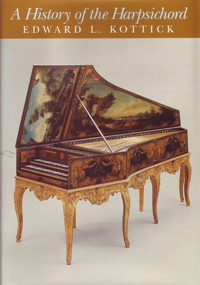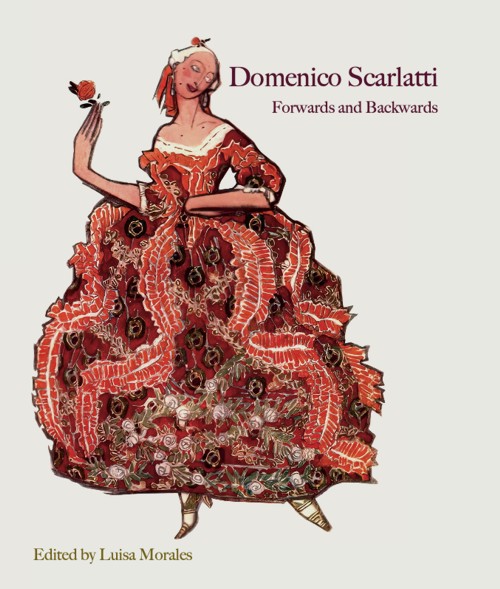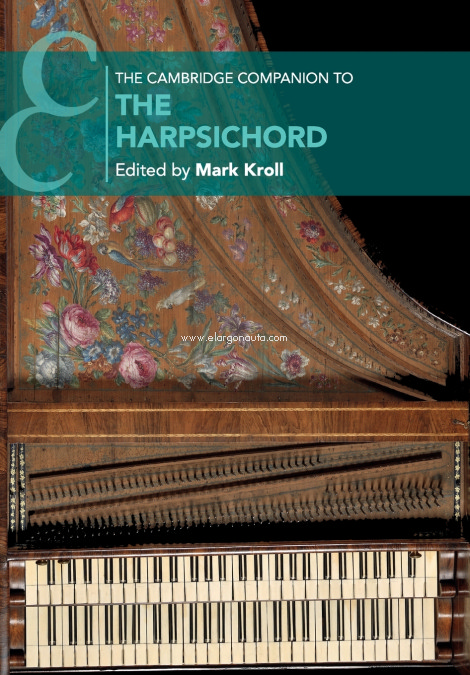
A History of the Harpsichord
Kottick, Edward L.
Indiana University Press. 2003Ficha técnica
- EAN: 9780253341662
- ISBN: 978-0-253-34166-2
- Editorial: Indiana University Press
- Fecha de edición: 2003
- Encuadernación: Cartoné con sobrecubierta
- Dimensiones: 18x26
- Idioma: Inglés
- Nº páginas: 576
Agotado
Agotado en la editorialPVP. 82,75€
Añadir a la Lista de deseos
This richly illustrated volume traces 600 years of harpsichord design and construction.
A History of the Harpsichord brings together for the first time more than 200 photographs, illustrations, and drawings of harpsichords in public museums and private collections throughout Europe the United States. Edward L. Kottick draws on his extensive technical knowledge and experience as a harpsichord builder to detail the changing design, structure, and acoustics of the instrument over six centuries.
Based on painstaking research, the book considers the place of the instrument in society and vividly describes the market forces that brought about changes in its form, decoration, and cultural importance.
An accompanying CD includes performances on several of the historical instruments described and illustrated in the volume, including a 1580 spinett virginal by Martin van der Biest and instruments built by Ruckers and Pleyel. The volume devotes attention to American harpsichord design as well as to present and future uses of the instrument.
CONTENIDO:
Plates and Illustrations
Acknowledgments
Introduction
I. The Fourteenth and Fifteenth Centuries
1. From Psaltery and Monochord to Harpsichord and Virginal
Hermann Poll and the clavicembalum
The psaltery and the monochord
Iconographical evidence of the harpsichord
A digression on pitch and scale
The manuscript of Henri Arnaut
Clavichords and virginals
The Royal College of Music clavicytherium
Summing up
II. The Sixteenth Century
2. The Emergence of the Northern Harpsichord
Archival records
Germany and the Müller harpsichord
Antwerp and the virginals of Ioes Karest
France
England and the Theewes claviorganum
Summing up
3. Antwerp Harpsichord Building between Karest and Ruckers
Antwerp
The surviving virginals
A virginal by Hans Ruckers
The surviving grands
Summing up
4. Early Italian Style
The earliest Italian harpsichords
Harpsichords, Italian style
Virginals and spinets
Italian scales
Decoration
Venice and the tradition of opulence
Milan
Naples and elsewhere
Summing up
III. The Seventeenth Century
5. The Ruckers-Couchet Dynasty
The Ruckers-Couchet family
Virginals
Single-manual harpsichords
Double-manual harpsichords
The harpsichord/virginal combination
The late Couchet instruments
The decoration of harpsichords and virginals
The Flemish harpsichord as a cultural icon
Summing up
6. Later Italian Style
New developments in the seventeenth century
Rome
Florence
Naples and elsewhere
Anonymous instruments
Summing up
7. Seventeenth-Century International Style
Characteristics of International style
Regional distinctions
Summing up
8. France
Virginals and spinets
Harpsichord making in Paris
Lyons and elsewhere
Summing up
9. Germany and Austria
Virginals and spinets
Harpsichords
Austria
Summing up
10. England
Virginals
Bentside spinets
Harpsichords
Summing up
IV. The Eighteenth Century
11. The Decline of the Italian Harpsichord
Florence
Rome and elsewhere
Summing up
12. The Iberian Peninsula
Spain
María Bárbara's inventory
Later Spanish instruments
Portugal
The Portuguese piano tradition
Summing up
13. Harpsichord Building in France up to the Revolution
Ravalement
The development of the classic French harpsichord
The Ruckers-inspired French double
Decoration
The Blanchet-Taskin dynasty
Other Paris builders
Lyons and elsewhere
The late French harpsichord
Summing up
14. The Low Countries in the Post-Ruckers Era
Antwerp
Tournai
Elsewhere
Summing up
15. Germany, Scandinavia, Austria, and Switzerland
Rivals of the harpsichord
Hamburg
Scandinavia
Berlin
Hannover and Brunswick
Gross Breitenbach
Dresden
Freiberg
Augsburg
Austria
Switzerland
Summing up
16. Great Britain and America
Harpsichord building from 1700 to 1725
Hermann Tabel
Shudi, Kirkman, and their competitors
The Ruckers-inspired English harpsichord
Developments after 1760
Bentside spinets
Scotland and Ireland
America
Summing up
V. The Nineteenth and Twentieth Centuries
17. The Harpsichord Hibernates
Some builders
The harpsichord played and preserved
Historicism and antiquarianism
Collectors and collections
Leopoldo Franciolini and the collectors
Summing up
18. The Harpsichord Revival from the Paris Exposition to World War II
The Paris Exposition of 1889 and French builders
The "Bach" harpsichord and German builders
Arnold Dolmetsch and the English harpsichord
Wanda Landowska and her Pleyel
America and John Challis
Summing up
19. The Modern Harpsichord
Historically informed builders: Gough, Hubbard, and Dowd
Authenticity with stability: Herz, Schütze, and Rutkowski and Robinette
Built to last: de Blaise, Morley, and Sabathil
The Serien builders: Ammer, Neupert, Wittmayer, and Sperrhake
New directions: John Challis and John Paul
The electronic harpsichord: Wittmayer, Baldwin, and the electronic keyboard
Kits
Summing up
20. Into the Future
Glossary
Notes
Bibliography
Index





